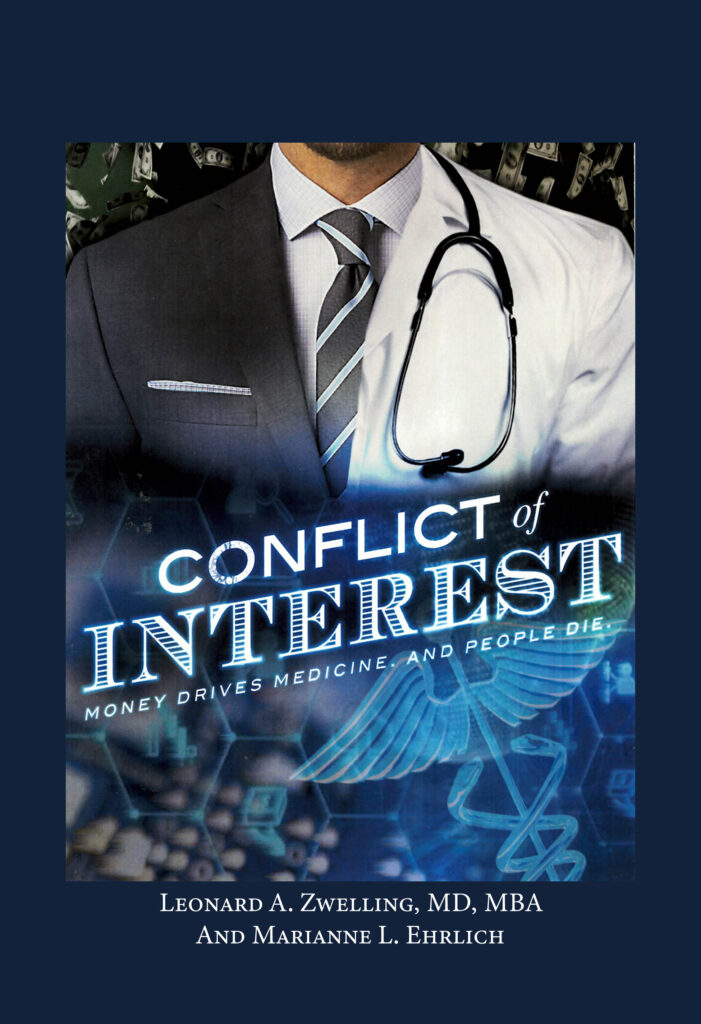Elegant
By
Leonard Zwelling
In scientific terms, an elegant solution is one that is pleasingly ingenious and simple.
Elegant science is harder to find than one might imagine. I was a lab-based scientist for over twenty years and I may have done at most three elegant sets of experiments.
The first demonstrated that sulfur-based compounds could block the lethal effects of cisplatin in mammalian cells. This cemented the two-step, crosslinking mechanism of the drug’s cytotoxic action.
The second described in detail a phenomenon first observed by my friend Warren Ross that certain planar cancer drugs seemed to elicit a strange protein-associated DNA cleaving effect in mammalian cells. My observations locked in the enzymatic nature of this effect which was eventually proven to be due to the drug stabilization of a topoisomerase II-DNA complex by Leroy Liu.
Later, I was able to show that the effect was quite different than anything previously known to break DNA in that it did not stimulate a common cellular reaction to DNA cleavage.
All of these observations occurred in the Laboratory of Molecular Pharmacology at the National Cancer Institute under the guidance of my mentor, Kurt Kohn. I honestly do not believe that any of the many papers I published while at MD Anderson could be considered elegant. They were solid science, but I don’t think anything I did in my lab in Houston ever came close to what I had done in Bethesda. I was on a great team there, led by a very great thinker and an elegant one.
I bring up the subject of elegance because I believe that is what is so lacking in the current leadership—administrative and scientific—at MD Anderson. Surely the Nobel-caliber work of James Allison was elegant and other MD Anderson figures have done elegant work. What I am looking for is new elegance from the young faculty who are situated in their careers where I was when I was doing my best work in Bethesda. There is some like the work on the microbiome and its effects on cancer drug efficacy by Jennifer Wargo. I fear that brilliant scientists are getting harder to recruit and retain due to the morale problems at Anderson as indicated by the Workload Survey results.
Although, it is hard to characterize administrative work as elegant, it can be equally as transformational. I believe that the work that my office did from 1997-2002 installing the modern systems that supported research at MD Anderson changed how research was done. Many faculty were not happy with our systems, but the government was quite happy with us and they have the final say given that they write the checks and make the rules.
On the clinical research front, MD Anderson wrote the book on cutting-edge clinical trials, especially when Dr. Freireich led Developmental Therapeutics. Most of the department leaders in Cancer Medicine under Drs. Krakoff and Hong were Freireich disciples. Imagination, daring, and elegance characterized the recurrent discoveries of new treatments for human cancers.
Without being too nepotisitic, the work of Drs. Fidler, Jaffe, and Kleinerman that brought liposomal muramyl-tripeptide to the clinic to treat lung metastases from osteosarcoma was elegant even as it took years to make it to the clinic. The US FDA still has not approved the drug despite it being approved and used all over the world-even in Kazakhstan.
It is the pleasure of the elegant solution that so stimulates the mind in science. The simple, elegant solution also tickles the psyche when it is applied to political or administrative work. The inability of the leadership of MD Anderson to recruit the faculty into its solutions to the problems it faces simply because it chooses to ignore the tenets of shared governance is a woeful excuse for clumsiness in lieu of elegance.
MD Anderson could use some more of that lost elegance.





2 thoughts on “Elegant”
Lenny,
I admire the way that you “soldier” on for how things could be better in medicine and at MD Anderson. Your comments take courage. I am hear to listen.
Thanks.
Jeb
Keep reading. More to come. LZ